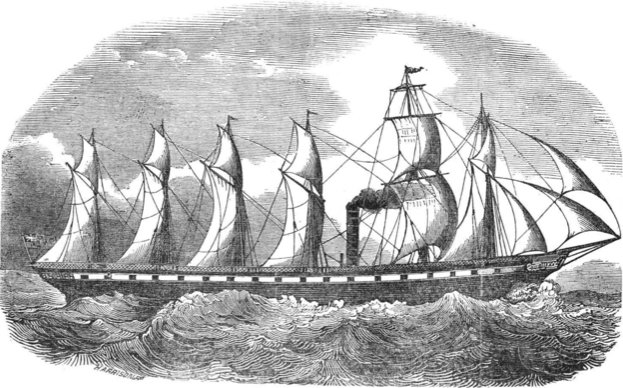In the 1970s, when I started my first proper job at Rolls-Royce, the bus was the normal means of travel. The management worked closely with the bus company to ensure that the employees could arrive on time and, when the Victory siren sounded at knock-off time, Gypsy Patch Lane and the Bus Park were awash with buses coming and going. Traffic was light so the buses were reasonably punctual and inspectors were on hand to sort out any problems. The routes were comprehensive and covered most of the city. But not everything was rosy—the buses were noisy, smelly and dirty, the drivers often surly and the ticketing was inflexible with little concession to regular users. As circumstances changed I moved to other transport—motorbike, car share and bicycle. The workforce at the factory declined and
the bus service went with it.
In recent years I have seen (from a distance) changes in the bus service but only occasionally used them. These included de-regulation which created multiple companies, the introduction and then decline of small hopper buses and the introduction of smarter double-deckers with the Showcase Partnership. The Centre is no longer a huge bus depot and only a few routes now reach the factory.
The retirement of my regular car-share partner, the rise in petrol prices and the timely email from the company Sustainability Network about special offers prompted me to look into the possibility of going back to the buses. An earlier idea to return to cycling was thwarted by a spell of poor health. I did some detailed calculations based on the per mile running cost of my car and, certainly with the special offer discount, using the bus was financially attractive so I vowed to give it a trial for a month and see how well it worked in practice.
The route
Using the internet extensively I discovered that the main service I would need was the same old Route 75 (FirstGroup) that I had used 35 years previously with the additional possibility of the 310 country bus from Thornbury and the 71a (Wessex Connect). As there is no inter-company ticket agreement I had to choose which one to use. The discount offer from FirstGroup plus the more frequent service of the 75 made the decision but it was a shame that the other route was not available as a backup as it would have been in the past. The Traveline journey planner web site doesn’t recognise this problem which makes it useless for
season ticket holders.
The loss of routes and the transfer of a few to other companies is a significant problem. The remaining routes stick mostly to the radial arteries out of the city with very few crossing between them. Had I still been living in Clifton as I had for a short time, there would no longer be a viable route to the factory. I had to do it once during the trial and the only way was into the Centre and back out or, slightly quicker, out to Cribbs Bus Station and back through Patchway.
The muddle of competing independent services—First, Wessex, ULink, Park&Ride, Flyer, Orbital, Night & others is an inconvenience for residents and visitors. London was left out of the grand bus de-regulation for this reason. Not that I would suggest that the near monopoly by FirstGroup should become absolute, but it does need a touch of regulation by the local
authorities.
Tickets
FirstGroup offers a bewildering variety of tickets—daily, weekly, monthly, yearly and even term and academic year season tickets covering one or more of three fare zones and various concessions. Some are available from the drivers, others from agents and some only direct from head office or via the internet. That is on top of the standard single and return tickets, about which there is remarkably little information—how do you discover what it costs to travel from A to B before you board and ask the driver? I suspect that day tickets and returns are now available before 9am but haven’t managed to verify that.
The special offer was for a Zone 1&2 monthly season ticket available for a two week period for £64 rather than the usual £76. So, one lunchtime, I strolled up to Patchway to find the agent and get one. The participating newsagent was neither the one on the main road, nor the one on the roundabout but a mile further on the housing estate. I was exhausted when I got back from the three mile round trip —it was unseasonably hot in April this year. Speaking to the owner of the newsagent on the main road, he said he had applied but was turned down because there was another one too near. I would disagree and, in any case, what is wrong with a little competition? Having located the correct agent I first had to convince him that the special offer existed at all and then, reluctantly, suffer a credit card surcharge.
What you get is a card which has to be read by a machine on each journey. It doesn’t require any ID so I suppose my wife could use it at weekends—an unexpected benefit. The zoning is a big improvement on the old days when season tickets were fixed to particular journeys. I never had one then because my work pattern wasn’t regular enough. These machines are twenty or more years old by now so must be due for replacement by an Oyster like system soon. Tickets purchased on board are still the traditional paper strip though now with UV anti-forgery security!
Towards the end of the experiment I looked again at the web site and discovered that, as expected, the price had reverted to normal—BUT—on closer inspection it was still at the discount price when you actually came to purchase one … so I ordered another while the going was good. These season tickets aren’t dated—the month starts from the day you first use it—but the internet form requires a start date for no apparent reason. Disregarding the discount, the best deal is the FirstExtra which gives you 12 x monthly tickets for the price of an annual season ticket and payment by instalments (interest free). It is extra good value because you wouldn’t actually use all 12 in a year if you take holidays. Of course, all these sums go for nothing if they increase the prices in line with fuel costs.
Timetables & Bus Stops
I found maps and timetables online so was able to plan my journey in detail. 14 minutes walk from home, 25 minutes on the bus, 5 minutes walk at the factory meant that I needed to catch the 7:47 to arrive in time to start my day—hence leave home at 7:35 which is about the same as when I drive.
That was the theory. In practice I soon discovered that the morning timetable was fiction. The arrival time of buses at Zetland Road was so erratic that you couldn’t tell which timetabled bus it was supposed to be. So I changed my schedule to leaving home ten minutes earlier and catching whatever came. The evening timetable was pretty reliable, perhaps because I was getting on only a mile or so from the start of the route. There is still the legendary problem of clumping and leapfrogging—no doubt a difficult one to solve.
An innovation since the old days is the electronic arrival indicator. These are fairly effective, though I haven’t quite figured out the logic of how they work and you have to allow for “Bus Minutes” being rather longer than the ones on your watch. I have seen days when the display is empty and others when buses arrived un-announced. Occasionally I was puzzled by the 07:47 vanishing from the screen altogether after having been static at “15 minutes” for some time. I have come to the conclusion that they were being withdrawn from service at the Centre. This made me very late on a couple of occasions but fortunately management is
rather more flexible than it used to be.
The bus stops in the City are pretty good, mostly with shelters, clean and with current timetables. They are easy to spot except perhaps in the central area where it can take some searching to find the one you need. It is good that they now have names on them. In South Gloucestershire the sign boards don’t contain as much useful information. The electronic display at Gypsy Patch Lane has been broken all month (Update! It was fixed sometime today, 3rd June) and I understand that there isn’t yet one at every stop.
Buses and roads
I was pleasantly surprised by how much the buses had improved over the years; they are now smooth, clean and comfortable. The entrance is at the same height as the (raised) kerb and the luggage rack is back (though I am not sure I would trust it if sitting upstairs). To go with the level entrance there is space for a wheelchair but I never saw it in use except by children’s push chairs. Free Metro newspapers are available – and the quality is what you would expect from “free”—but people do read them.
Another innovation is the “Stopping” indicator in addition to the traditional bell if you want to get off (it seems that all stops are request stops these days). This was effective on many buses but, on my regular route, the turquoise display is not bright enough for a sunny day. Another unexpected change is that country buses are no longer limited-stop making them no quicker than the city buses.
On a few buses there was a marquee display showing where the bus was going—it would be helpful for it to announce the next stop and I would have thought that the technology that does the bus stop signs could also do that. Also note that the back number boards are important but quite a few are broken.
I was impressed by the skill of the drivers—those tall double-deckers sway a lot with the road camber but, apart from low hanging branches, they never hit anything even when the shelters, lamp posts and trees were very close to the edge. The observance of regulations and courtesy to other road users and passengers was also good—even at frustrating moments when blocked by a slow cyclist that should have been on the designated track. From the vantage point of my preferred top-deck front seat you get a good view of what is happening and I saw a lot of bad driving from up there—it was very rare to see a cyclist observe a red traffic light signal for example and pedestrians seem to have a death wish.
Another observation is that bus lanes are often not the advantage that they are supposed to be. I still don’t understand why taxis are allowed to use them and, despite the regular attendance of wardens, people parking in them regularly blocks the buses forcing them out into the outer lanes. Although not an advocate of surveillance, perhaps the new bus lane cameras will be effective—I just hope their scope is limited to only that. Cycle lanes are also strange and sometimes beyond comprehension. Some are so short to be hardly worth while, just creating a false sense of security. In other places there are two lanes in parallel or not marked clearly so few cyclists use it. If a good set of contiguous lanes were available then I would suggest making them compulsory for the safety of the rider and convenience of other road users.
Conclusion
The experience overall was a good one, sufficient that I am going to continue to use the bus—at least as long as the discount holds. Some attention to detail could improve it but other problems may require long term serious research.
I was fortunate that the weather was good; only one rainy day (when the driver had to ask us to open the windows as his observation camera had steamed up). The added benefits have been the exercise to wake me up in the morning and the lower stress on the journey. The use of the ticket for extra journeys has been limited—partly because my wife hasn’t got one so where I may have taken the bus on my own we have either walked or driven together.
I won’t be giving up the car but, if it became regular, it would almost certainly be enough to reduce us from a two to one car household. The principal drawback is that the season ticket, essential to make it cost effective, discourages the use of alternatives. On the other hand, having the pass in my wallet does get me into town more often than I would otherwise have done—it is strangely liberating. No doubt the same effect is experienced by pensioners.
Key points
- Using the bus to commute was only made cost effective by the discount. To be viable it must come close to the equivalent door-to-door journey for one person in a family saloon.
- The routes available are very limited, particularly off the radial arteries. This is exacerbated by there being no inter-company ticket agreements. Bristol needs an integrated service.
- The Traveline journey planner web site doesn’t recognise the ticketing limitations.
- The web site is ok but the variety of tickets is complex and not fully described, in particular the basic single and return fares. The online ordering system is not consistent with the information pages.
- Ticket agents are convenient but they are unnecessarily restricted.
- I can understand timetabling is difficult but at least keep the electronic indicators working and accurate. For frequent routes “every N minutes” may be more useful (and accurate) than actual times.
- Even locals can’t tell you where to catch a particular bus in the central area. Clear signage, maps and markers are essential. The stops in South Gloucestershire lack route numbers.
- The “Stopping” indicators need to be clearer. Adding “Next Stop” displays on board would be helpful.
- The drivers are to be congratulated on their skill and courtesy.
- The arrogance of commuter cyclists has become an epidemic – and that remark comes from a once regular cyclist. Similarly illegal parking has a real effect on bus delays.
- Bus and cycle lanes need a comprehensive review as a whole not piecemeal as seems to be the case now.
 So the double page article this morning looked like it would be their usual fare—titilating comments about the invention of Otto Titsling with statistical detail on sizes and suitable pictures etc. But I was wrong. Apart from some of that stuff from the subeditors in the form of big circular bullet points, the remainder of the article was remarkably sensible. It seems that as a nation we are good at recycling quality outer clothing via charity shops but think that they don’t want underwear. In the case of the ladies brassier, they do. It is a valuable and prized commodity on the third world second hand market and Oxfam are trying very hard to aid women in Africa by making a special effort to supply some of the demand.
So the double page article this morning looked like it would be their usual fare—titilating comments about the invention of Otto Titsling with statistical detail on sizes and suitable pictures etc. But I was wrong. Apart from some of that stuff from the subeditors in the form of big circular bullet points, the remainder of the article was remarkably sensible. It seems that as a nation we are good at recycling quality outer clothing via charity shops but think that they don’t want underwear. In the case of the ladies brassier, they do. It is a valuable and prized commodity on the third world second hand market and Oxfam are trying very hard to aid women in Africa by making a special effort to supply some of the demand.








 Webmaster
Webmaster